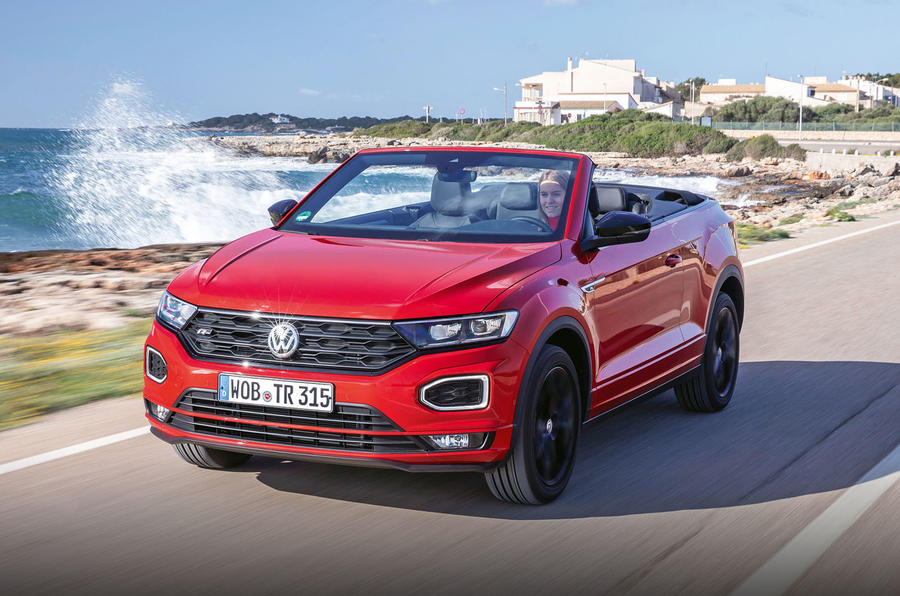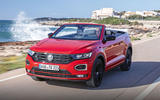What is it?
Adding handsomely to the weight, reducing the structural rigidity and compromising the versatility of one of the most popular crossovers on sale right now doesn’t seem an entirely clever idea. But that’s exactly what Volkswagen has done.
The new T-Roc Cabriolet indirectly replaces the Golf Cabriolet, and with the Beetle now also gone, that leaves the Karmann-assembled T-Roc as the brand’s sole open-top model.
The styling remains well balanced when the soft-top is in place. It’s a multi-layer fabric structure designed to mimic the lines of the fixed-roof model. To package it, Volkswagen has made some notable changes to the platform, the most significant of which is the addition of 37mm to the wheelbase, which in turn adds 34mm to the overall length. There’s also a number of added strengthening measures within the floorpan, sills, doors and windscreen.
The four framed doors of the T-Roc hard-top have also made way for a pair of longer frameless doors, and subsequently the B-pillars have gone, too.

What's it like?
The changes to the underbody come with one big drawback: the car driven here weighs 194kg more than its regular equivalent, and it struggles to hide that heft. The turbocharged 1.5-litre four-cylinder petrol engine, with 148bhp and 184lb ft of torque, is terrifically flexible and quite willing to rev, but it has to work harder while on the move and demands more gearchanges to achieve this.
Despite its firm damping, the T-Roc Cabriolet isn’t a car that likes to be pushed too hard, either. Body roll is pretty well controlled – there’s a lower centre of gravity, due to the lighter roof and added weight concentrated within the platform – but flex and shake is quite noticeable, especially on less than smooth surfaces, and this ultimately limits the T-Roc Cabriolet’s dynamics. The ride is more fidgety and you can’t escape the shimmy through the body during cornering.
It’s not all bad, though, because adopting a more moderate speed and lowering the roof provides a chance for the car to display more favourable traits. At a gentle cruise, it’s very much in its element, even if the effect of flex and shake never really disappears completely. The seven-speed dual-clutch automatic would be our choice, but the six-speed manual is light and precise in its action.
The swift operation of the roof, which lowers and stows above the luggage compartment behind the rear seats in just 12sec, provides an al fresco experience at the press of a button. With the windows up, there’s very little wind buffeting up to around 80mph, making it quite pleasant as long as the road isn’t too challenging. Still, it’s unusual. Forget any notion about it being sporty: you sit at a typical SUV height without a roof over your head.










































Join the debate
Add your comment
No more golf convertible or
A stupid version of a stupid
A stupid version of a stupid car made by a stupid company, wouldnt touch it with several barge poles stuck together.
It's a skip with an engine and tyres
I don't mind any car trends. I don't like certain trends but obviously others do and good luck to them - life would be boring if we all wanted the same thing. But I truely cannot see what the appeal of a convertible SUV is to anyone. What makes this worse is that folk can see VW have ditched their once quality build materials for a hard plastic dash, just like those in the cheapest budget cars. It's mind boggling why anyone would want to flaunt that. The only saving grace is that up to this point, convertible SUV's have been a sales disaster. Hopefully I won't see many of these either.